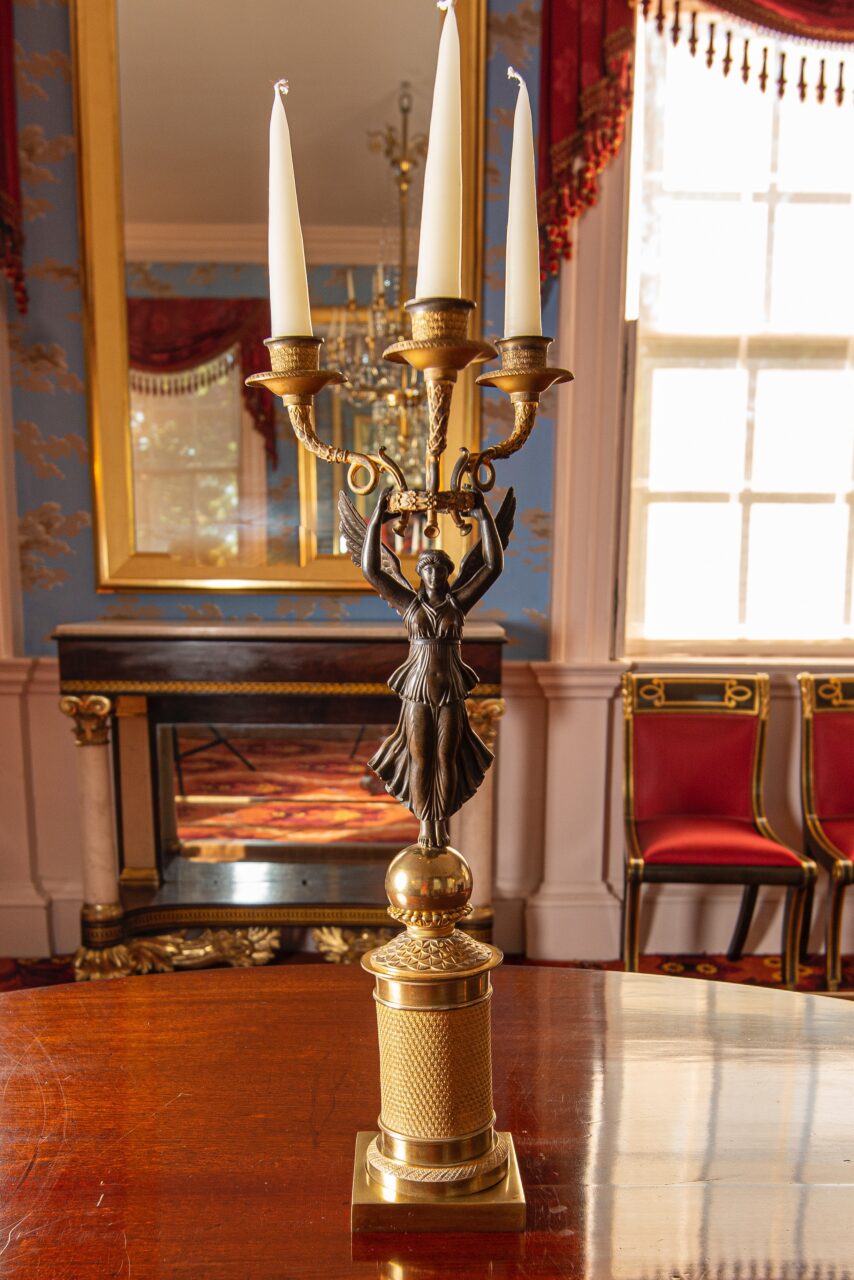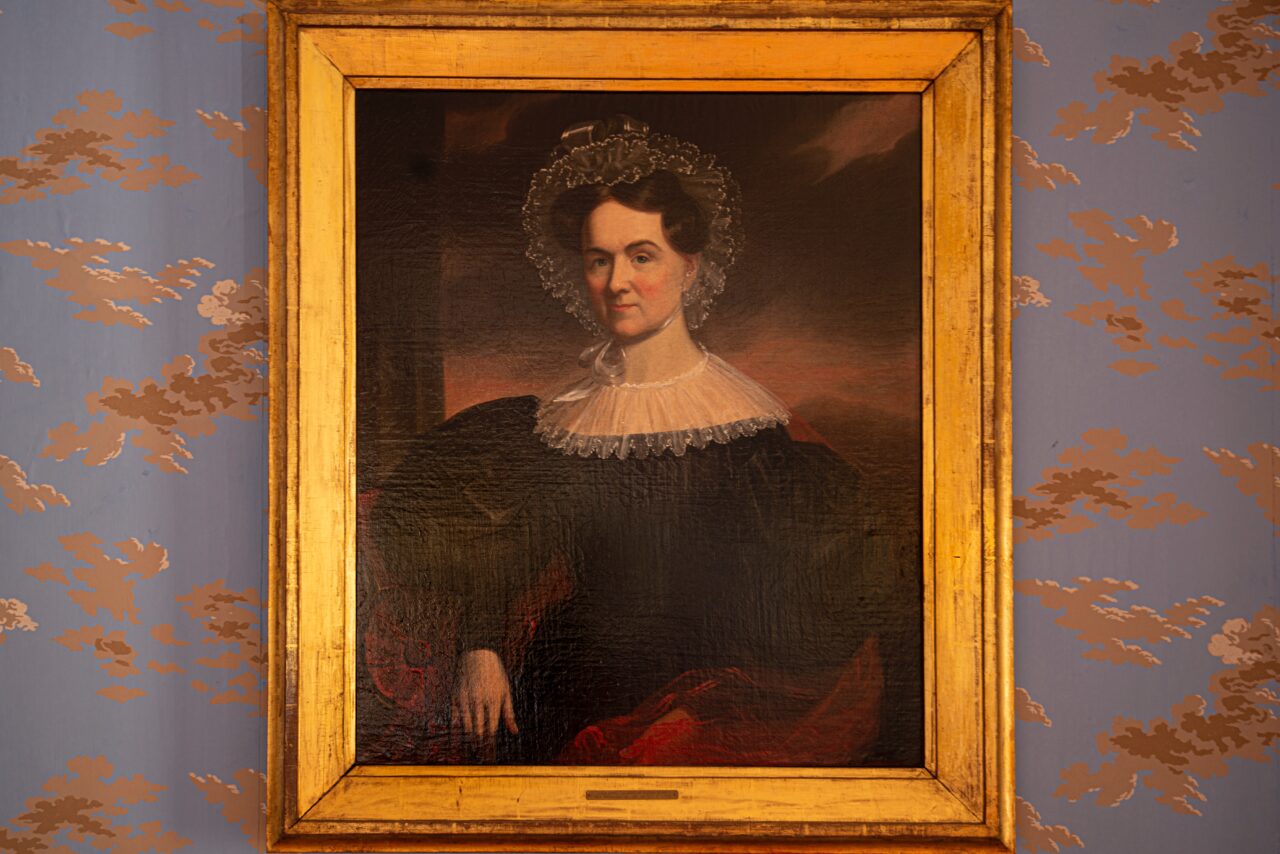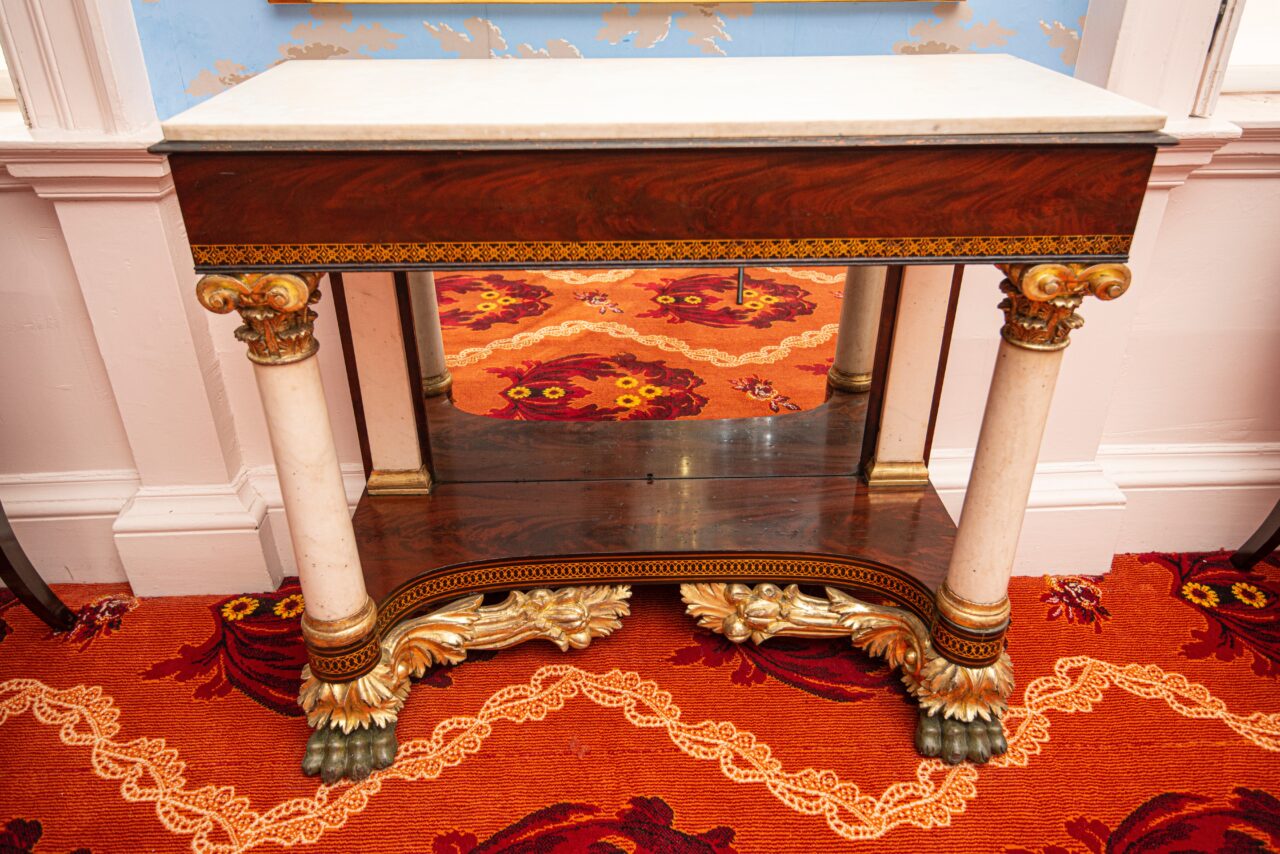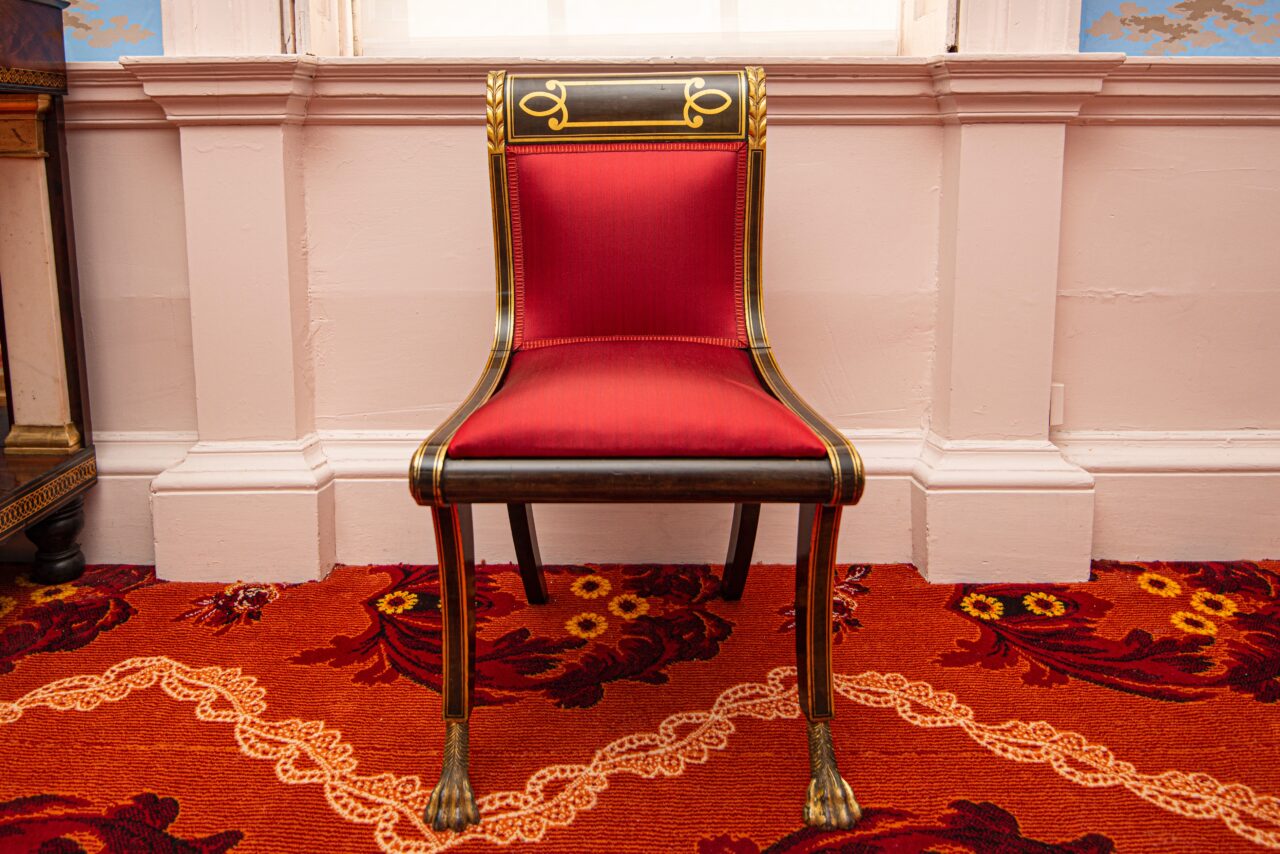
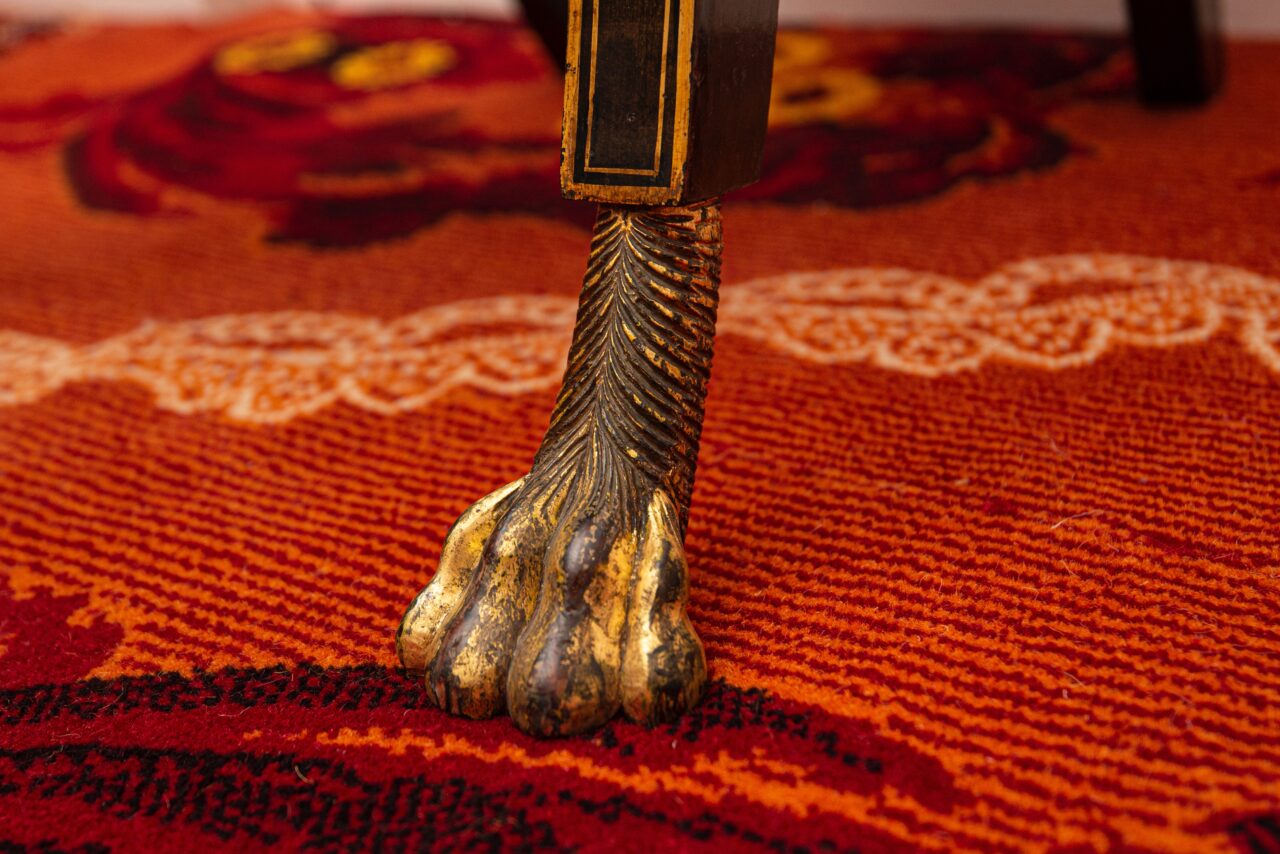
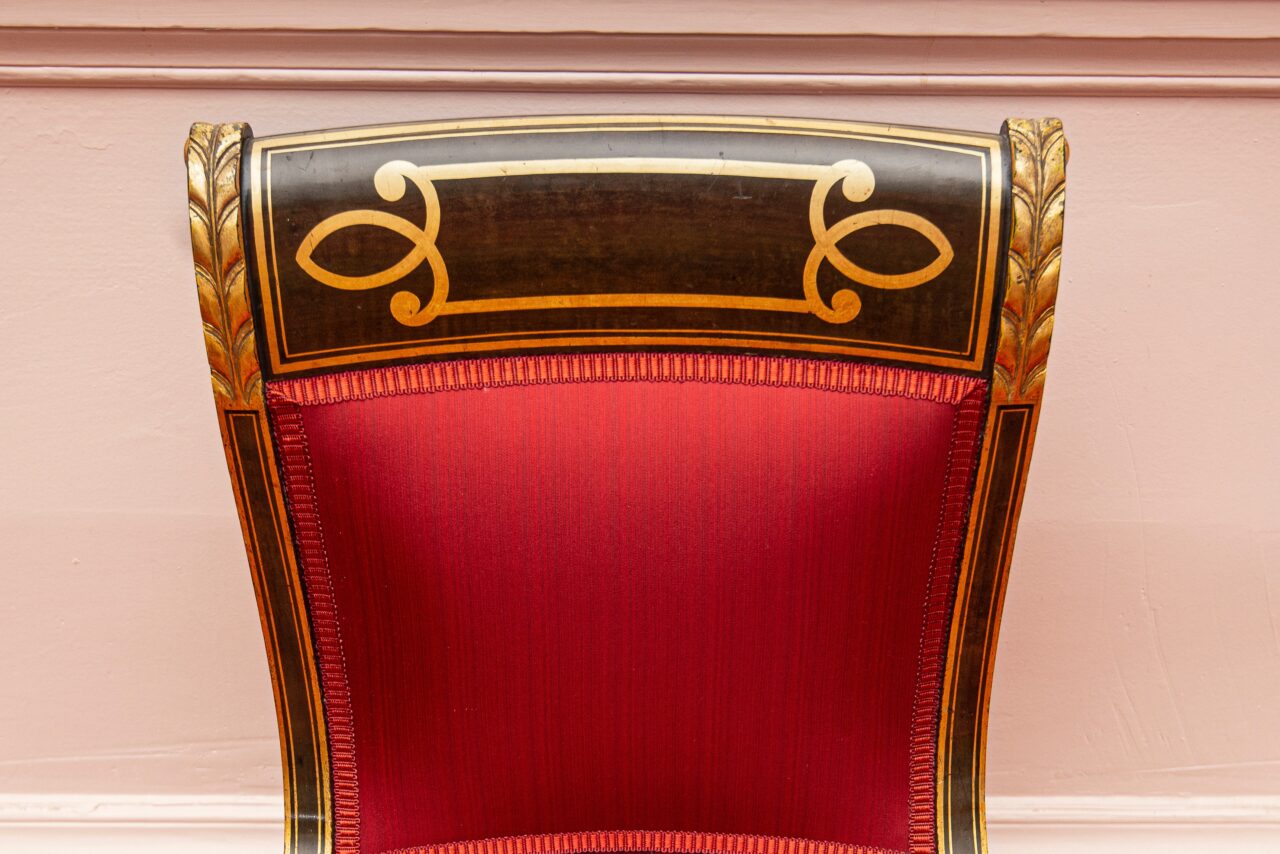
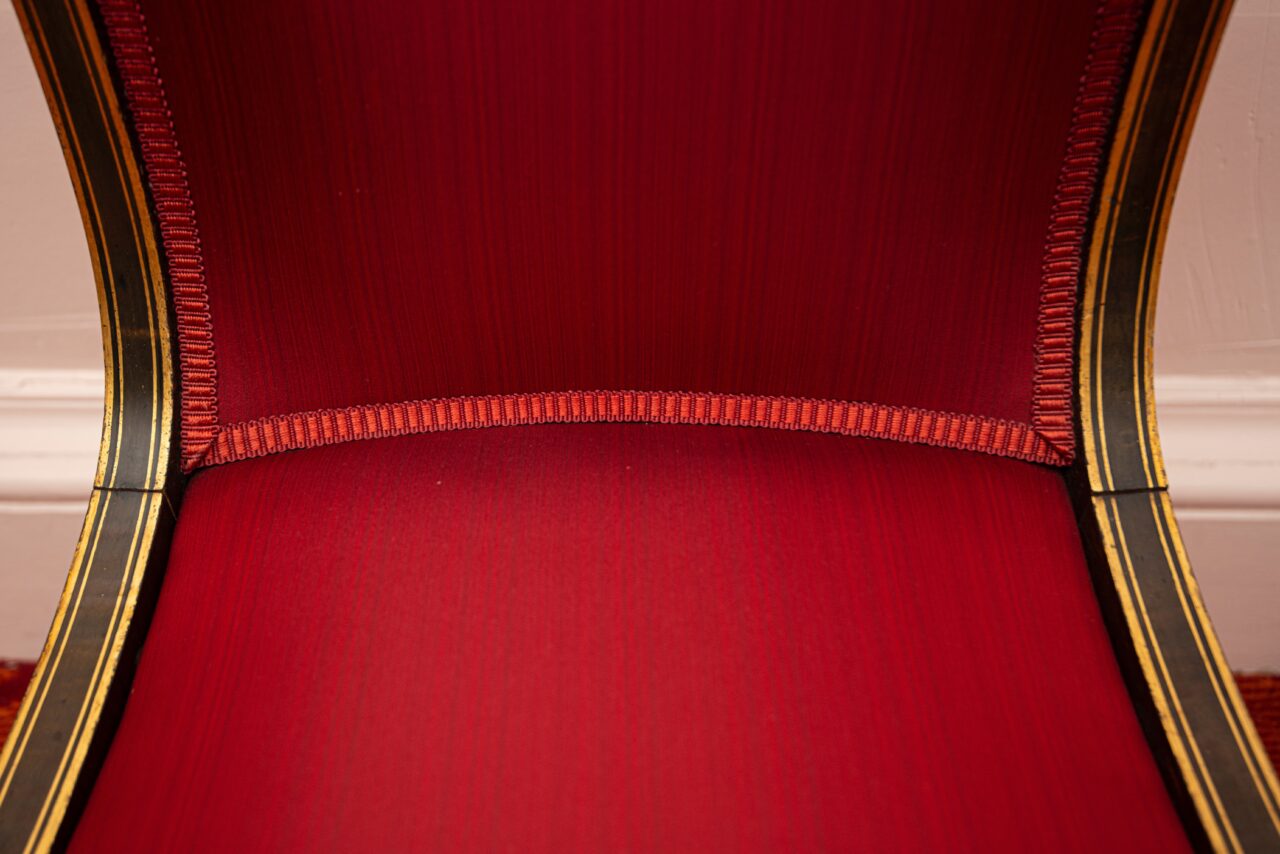
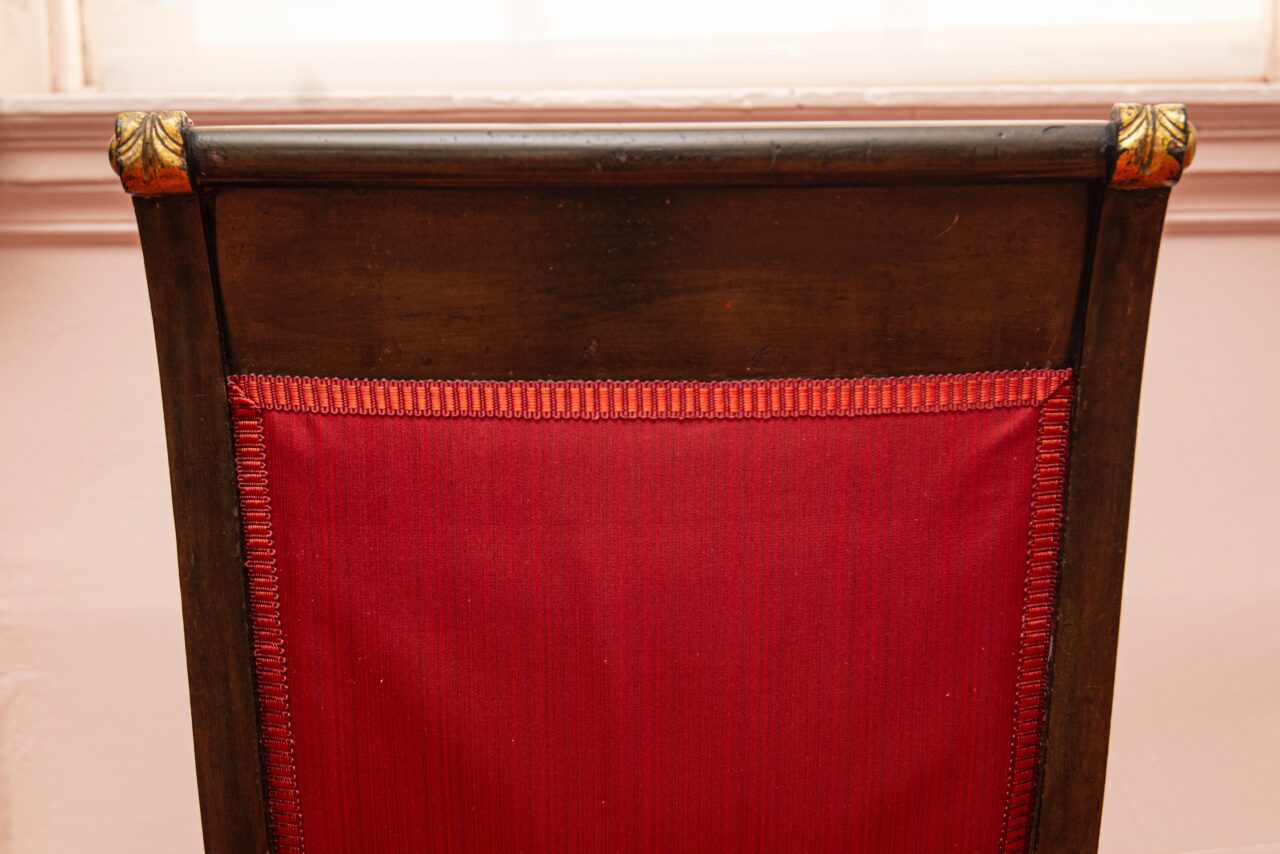
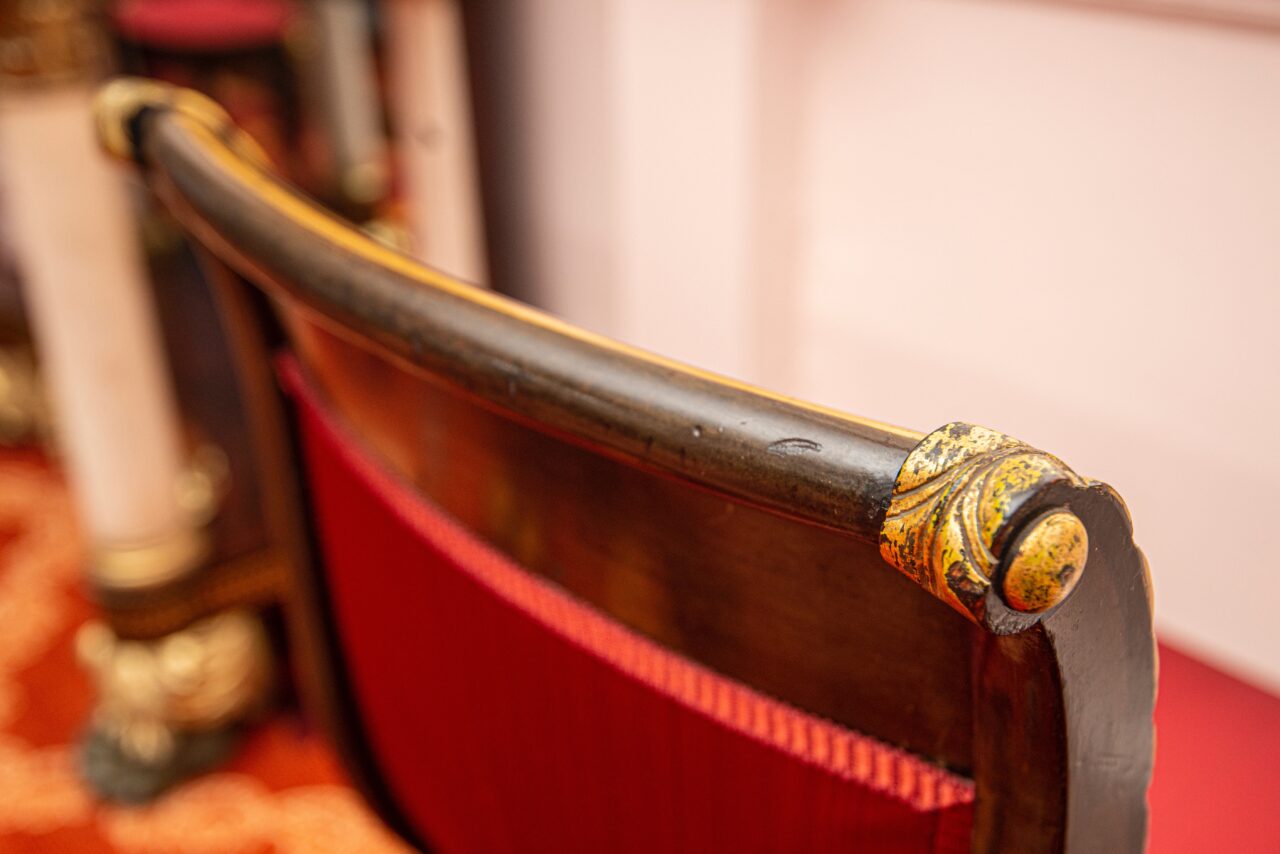
Klismos Chair
- Artist or maker
- Phyfe, Duncan
- Date
- 1820-1830
- Culture
- American
- Medium
- Curly Maple, Gold leaf, Silk
- Object No.
- 1990.1.2.a-b
- Location
- Octagon Room
- Description
-
Klismos form sidechair made in New York with ebonized and gilded wood. Set of 12 chairs that belonged to the Jumels. It is likely that Eliza Jumel commissioned Scottish-American cabinet maker Duncan Phyfe (1768 – 1854) to design a suite of furniture for the Mansion’s Octagon Room circa 1825. Phyfe was the leading furnituremaker in the United States in the 19th century.
